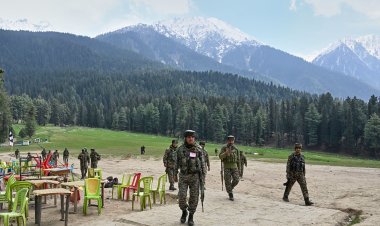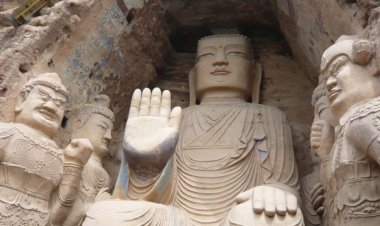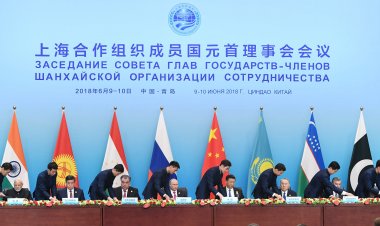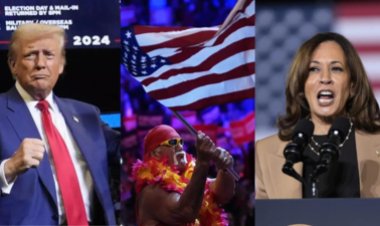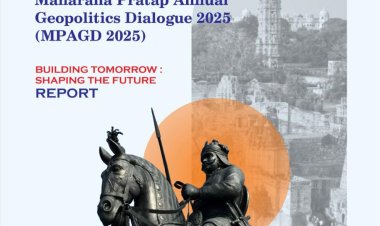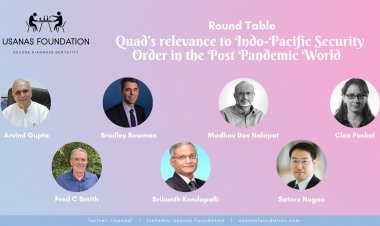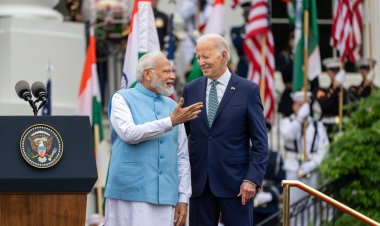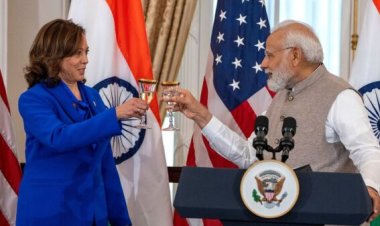NewsClick controversy: Why India needs a better understanding of foreign influence operations
India needs to overhaul its intelligence apparatus as our understanding of these deep-rooted, layered, and complex espionage operations is very superficial and shallow.

Analysis
By Abhinav Pandya
The recent controversy about the digital news website NewsClick’s promotion of China’s interests and peddling of its narratives has nearly shocked everyone. Following the initial expose when the long trail of funding routed through Neoveille Singham’s complex network of shell companies and charities, to anonymous and innocuous-sounding organisations like NewsClick, Codepink, and No Cold War, and high-profile activists like Teesta Setalvad, her sister Tamara, Gautam Navlakha has come out, security experts and the intelligence community stand speechless and startled at the depth of Chinese penetration in Indian systems and institutions in government, private and the non-profit NGO world. However, it must be mentioned that these practices are not new to the world of espionage. In the espionage jargon, such tactics are broadly referred to as influence operations.
When a country aspires to become a world power then its strategic calculus does not remain confined to its hardcore military power. Generally, a leading and paramount position in global affairs is a product of the country’s comprehensive national power which is the aggregation of its military power, intelligence capabilities, economic heft, soft power, cultural influence, and overall capability and stature to control the power dynamics of and determine the standards, norms, and definitions in the global governance institutions and financial institutions. With such lofty ambitions, their intelligence machinery is not confined to tactical-level covert operations, generally shown in films and fiction. Instead, the intelligence operations become highly complex and long-drawn. That said, creating a favourable dominant narrative promoting their national interests becomes one of the most crucial aspects of their grand strategy, besides achieving military dominance and firm control over the global trade flows and economic resources. Such exercises extend over decades and centuries.
Influence operations and India’s vulnerability
The aspiring world power creates institutions, builds networks and assets to extend its influence and propagate its narrative abroad. In the past, the Western world has executed classic influence operations. The US-led Western world has established firm control over global institutions like the UN, World Bank, and WTO. Their academic institutions and academics are at the forefront of advanced research and theorising in pure sciences and liberal arts. Their think tanks set the discourse on international relations, security, and foreign policy. Norms like democracy, human rights, and press freedom are fundamentally defined by the Western world. The US has established its influence by penetrating the minds of people and changing their behavioural and thought patterns through its films, universities, and corporations. The long queue of people waiting in line when the first Starbucks was opened in India showed how the people perceived the US brand Starbucks as a status symbol and felt pride, standing in the long queue outside Starbucks. The US has sold its narrative to the world through Hollywood, hamburgers, and technology. The US offers a large number of scholarships and grants to activist NGOs, and individuals. Also, they spot talented youngsters in the private sector, sciences, media, academia, civil society, foreign service, politics, and civil service and invite them to their country for several fellowships and exchange programs. Reportedly, they spot individuals with a bright future – the ones who are likely to become leaders in their fields in their home countries. My informed interlocutors in the Western world informed me that in the intelligence training modules, they are taught in detail about the Ramayana and Mahabharata and India’s Putra-Moha syndrome. They utilise this weakness to cultivate assets by offering generous scholarships, admissions, and jobs to the sons and daughters of powerful bureaucrats and politicians in prestigious universities, think tanks, corporate entities, and multilateral diplomatic and civil service institutions. The larger purpose behind such an exercise is to create long-term assets in a foreign country to promote own national interests.
It is pertinent to mention that India has historically been highly vulnerable to such influence operations. Thousand years of foreign rule, oppression, and the colonisation of minds have majorly dented an average Indian’s self-confidence and self-esteem. Though it sounds like a cliché, generally an average Indian is found to be in awe of foreigners, particularly the West. For Western researchers, it is a cakewalk to approach India’s hubristic bureaucracy for interviews and interactions for their research project, in the garb of which they often work as agents of foreign intelligence agencies. A classic example comes from a racy thriller titled Spy Stories: Inside the Secret World of RAW and ISI, written by Adrian Levy and Kathy Scott Clark. This book blatantly projects a Pakistani storyline on Kashmir, as narrated by the former DG ISI, Gen Ehsan ul Haq, in which the authors blame India for creating Burhan Wani. Even regarding the Pulwama suicide attack, the way the authors discuss implicitly suggests that it was an inside job. Interestingly, in this Pakistani IW project, though not yet proven, the authors interviewed three former intelligence chiefs who unwillingly became a part of this Pakistani propaganda war.
Besides, Indians by nature are very welcoming towards foreigners due to the ideal of Atithi Devo Bhava. Foreign researchers, documentary makers, and NGO workers easily mingle into Indian society, without raising suspicions. Most of the time, they are able to conduct field research with anti-India objectives without caring for research ethics and other relevant permissions. This would not be possible for Indians in foreign nations. In Delhi, it is a common sight to come across beautiful and charming foreign female researchers, activists, NGO workers, and artists penetrating the party circuit of high-profile government and private sector elites. There are myriad examples when such agents came close to powerful political, bureaucratic, and financial elites in no time and the proximity gives them so much power that they not only influence policy-making through their access to people sitting in very sensitive positions in the security and intelligence apparatus but also sabotage our national interests by passing on critical information to the enemy agencies. With such connections, I have come across many of them getting recommendations from their high-profile contacts for national-level Padma awards! All this happens as a result of their charm offensives. The biggest espionage ring run by Kumar Narayan in Delhi is known to all of us. In many foreign quarters, Delhi is known as a den of spies.
Curious case of China
However, in China’s case, such influence operations are several steps ahead of what the West has done. With a distinctly visible audacity and ruthlessness, Beijing’s approach is off-limits and sometimes even beyond the imagination of veteran security analysts. They target their dissidents in foreign countries, steal technology with the help of their assets in established corporations, scientific labs, and universities, interfere in municipal, mayoral, and city council elections, and influence voter behaviour from the lowest level to the national level elections, orchestrate strikes in factories and against the development/infrastructure projects with their assets in civil society. They conduct psy-ops, Information Warfare, and influence operations through gaming apps and even the mainstream electronic and print media, as witnessed recently in the case of NewsClick. In Canada, the Chinese interfered in municipal elections. In several strategically important countries like Sri Lanka, Nepal, Bangladesh, and the Solomon Islands, they have aggressive interference in domestic politics. They support dictators with surveillance and defence technology and refrain from any kind of military interference. In return, they get lucrative investment opportunities and control over natural resources. Their easy and dubious loans have led many countries into debt-trap. They claim foreign territories on the basis of fictitious historical references and concocted cartographic evidence. Besides, they offer generous scholarships, exchange programs, and book publishing grants primarily to win hearts and minds and cultivate an army of intellectuals who can peddle their narrative. In India’s case, they also perceive the film industry as a powerful channel for narrative building. Partly, this sophistication, nuances, and aggressive approach comes from their fundamental strategic doctrines. Tsun Zue, the greatest Chinese strategic expert believed that wars must be won without fighting them and the armies should march only in the victory parades.
In most of these influence operations, the lines between legal and illegal, ethical and unethical are blurred. The role of intelligence agencies is so layered and circuitous that it can never be firmly established with any concrete proof. For example, Indians writing highly biased and critical anti-India stories in foreign newspapers and magazines get handsome remuneration for their articles. The possibility of them working for foreign intelligence agencies and anti-India lobbies cannot be ruled out. In many cases, they may genuinely feel what they write because of their personal ideology. And, even if they are getting generously paid for writing such articles, there is nothing illegal about it. India, being a democratic country cannot impose restrictions on these activities.
How should we respond?
Having discussed the history, nature, and spread of foreign influence operations, the question arises – What is the solution?
First and foremost, it needs to be highlighted and contemplated upon that our understanding of these deep-rooted, layered, and complex espionage operations is very superficial and shallow, and the responses are mostly bureaucratic, ad-hoc, and tactical.
Secondly, it is essential to understand that in India the security and intelligence masterminds are mostly bureaucrats with a police mindset. Their training and experience are inadequate in understanding these present times’ complex propaganda and narrative-building intelligence operations. Further, with the advent of pernicious technologies like robotics and generative AI, misinformation and disinformation challenges and the alarming role of social media, their generalist training, outdated skill-set, and skin-deep understanding become a severe handicap. Their focus has mostly been on Pakistan, Bangladesh, and Sri Lanka. The knowledge and expertise on China and the West’s highly complex and technology-based propaganda wars, intelligence, and cyber operations are lacking. Even Pakistan has been ahead of India in the Information Warfare operations in Kashmir and in the international circuit.
Thirdly, we are trained on intelligence and International Relations theories borrowed from Western Universities. Those theories are the product of Western experiences. They cannot explain and comprehend India’s needs and security challenges. On the other hand, China has established its foreign policy and security doctrines on its indigenous thinkers and strategists like Tsun Zue and Confucius. They have an original doctrine that guides their long-term vision and roadmap on security and foreign policy issues. On the other hand, a large number of the Indian IR experts, diplomats, and senior security professionals find it difficult to speak fluently in Hindi; Sanskrit is a far cry. Wisdom and treasures hidden in our original intelligence doctrines based on classics and thinkers on statecraft like Acharya Hemchandra Suri, Bharathari, Shukraniti, Kautilya, and Kamandak’s Nitisar remain neglected and dumped in history. In my closer interactions with them, I found that India’s security experts and diplomats have a surface-level understanding of Sanatan IR theories like Vasudhaiv Kutumbkam and strategic doctrines like Sam-dama-danda-bheda.
The above-mentioned solutions merit a detailed discussion; however, for this piece, I must conclude by stating that we need a revolutionary change in our understanding of intelligence, and following that we need a major overhaul of intelligence apparatus and operations.
Disclaimer: This paper is the author's individual scholastic contribution and does not necessarily reflect the organization's viewpoint. The article was originally published by Firstpost.

